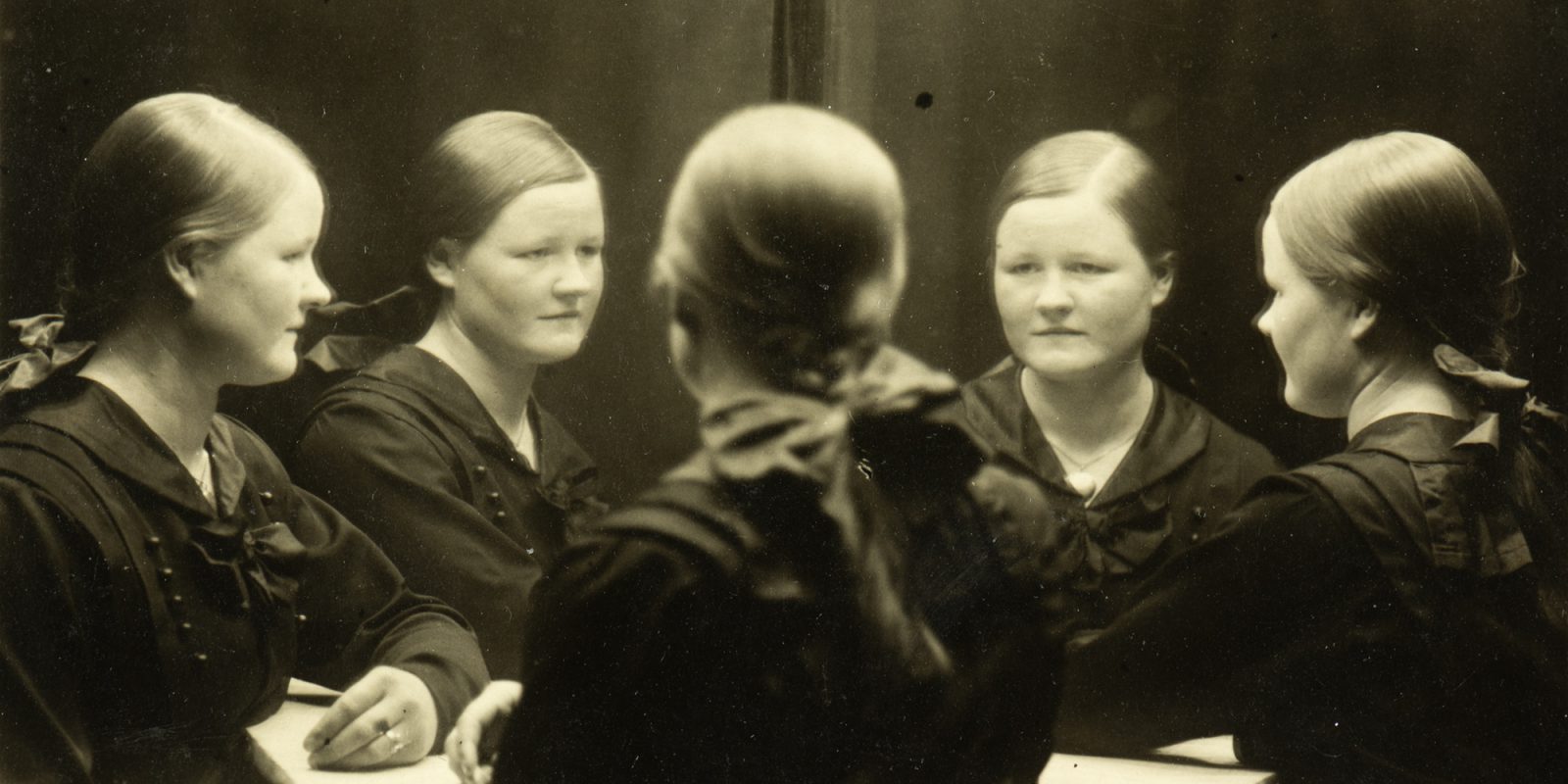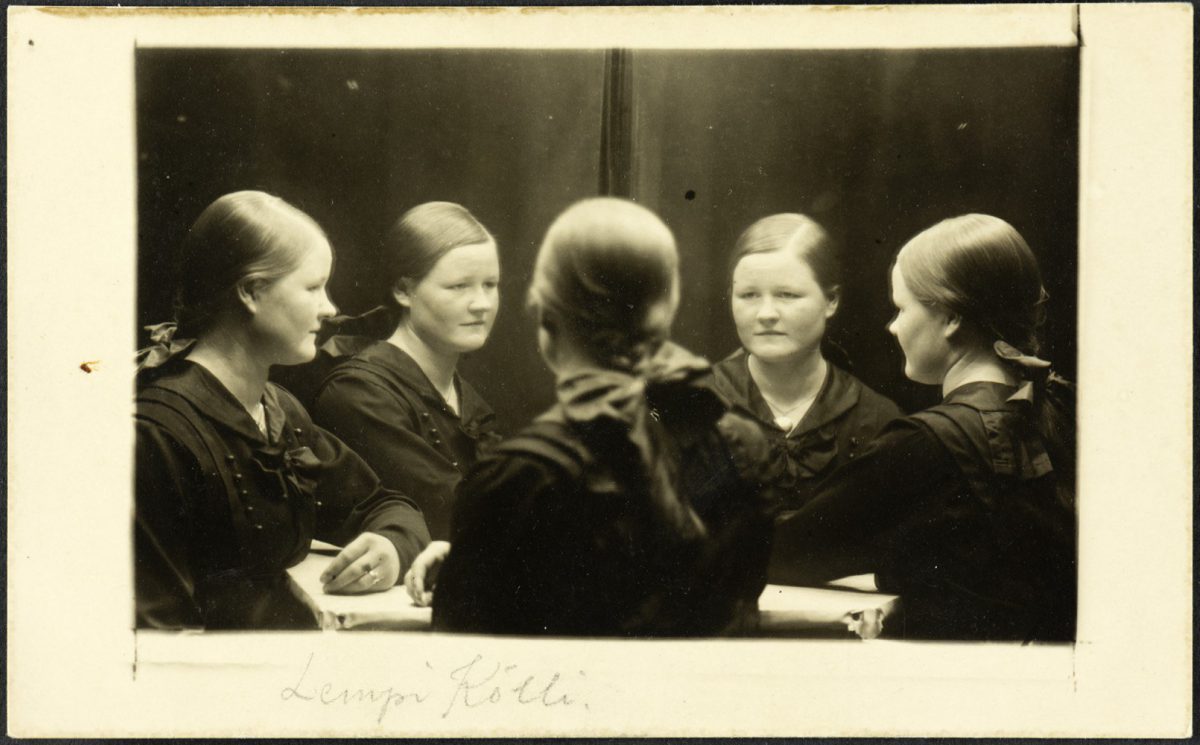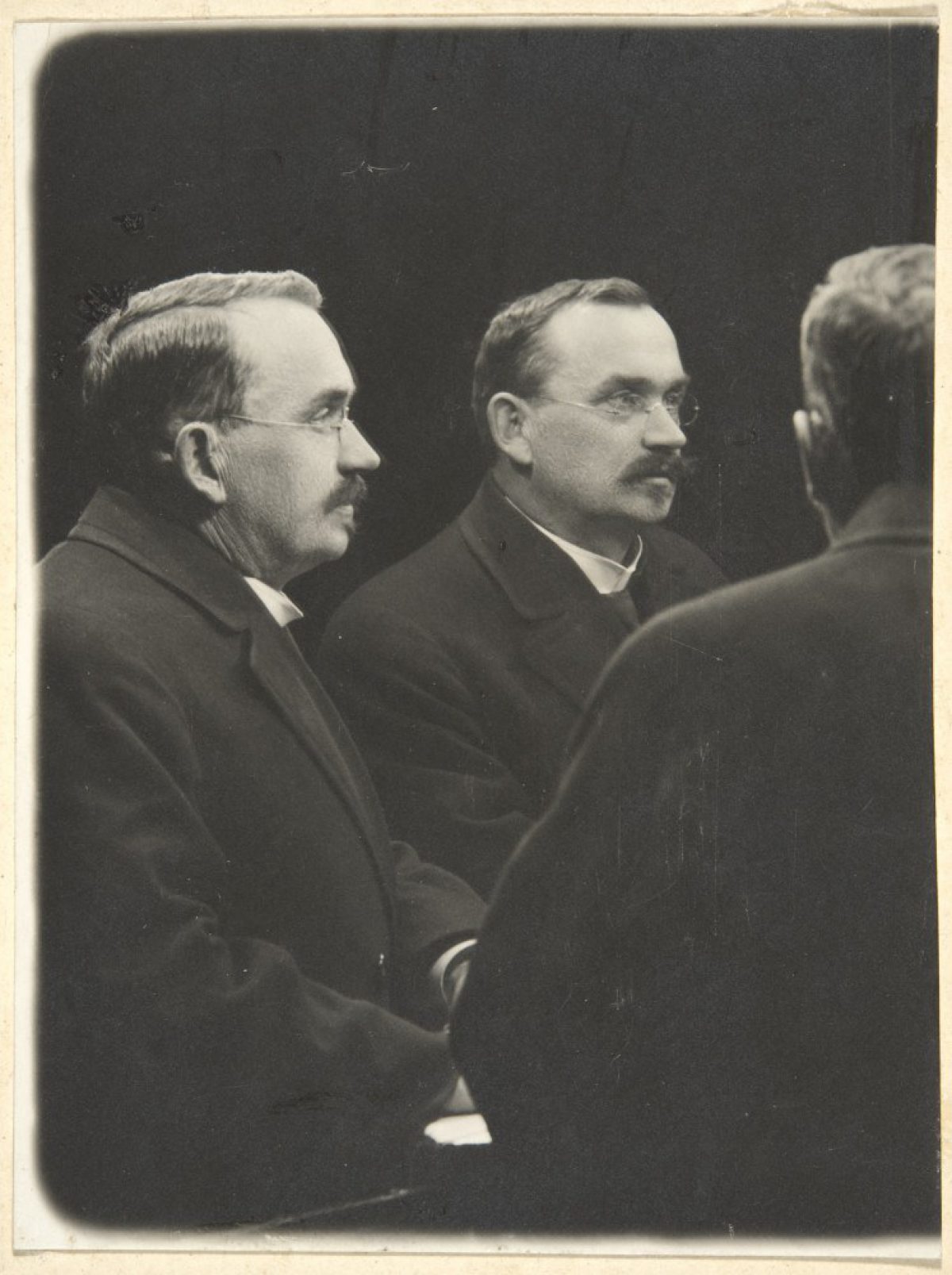
‘Have your picture taken in good company’
Multigraph portraits: a style of studio photography.
The multigraph portrait technique was invented by photographer James B. Shaw in Atlantic City in the United States in the early 1890s. An American photography magazine criticised the technique in 1895, because it believed that the idea had been copied from the mirrors on lifts. The postcard-style portraits taken at multigraph portrait studios were a short-lived phenomenon that lasted for the first few decades of the 20th century. It remained common in America and Europe until the 1920s, but had disappeared by the 1950s.
Multigraph portraits were created with mirrors. The principle was the same as in kaleidoscopes. A person would sit in front of two mirrors, and the number of images depended on the mirrors’ angle. An angle of 65–85 degrees created five images of the person. If the angle was 90 degrees, the result was three images. The goal was to make it seem like the subject was sitting by a table accompanied by their clones. The photographer was usually behind the model, more rarely on one side or in front. Occasionally, the corner of the mirrors is visible in a picture, such as in the multigraph portrait of Lempi Kölli.
Based on newspaper advertisements, the first multigraph portrait studio in Finland was in Siltasaarenkatu street in Helsinki. An ad in Uusi Suometar in 1916 read: ‘Photographers! Photograph card factory Uolevi and photography studio Helsinki in Siltasaarenkatu 4 sold cheaply due to owner’s illness. Shop includes electric studio, magnifying shop, framing shop, photo card factory and first Finnish multigraph portrait studio.’ By that year, Helsinki already had several multigraph portrait studios, such as Nestori Jaakkola’s Cityn Peilivalokuvaamo in Kaivokatu and the Danish multigraph portrait studio owner Nils J. Mortensen’s studios in Siltasaarenkatu and Fabianinkatu.
In 1916, multigraph portrait studios could also be found elsewhere in Finland, for example in Vyborg, Sortavala, Oulu, Kokkola and Lahti. The advertisements were enticing: ‘Have your picture taken in good company and get to know yourself from every angle.’ ‘A new style of photography. People in Sortavala are now able to have their photograph taken in fun company at my multigraph portrait studio.’ ‘All new in Lahti! Lahti multigraph portrait studio.’
Multigraph portraits offered a competitive edge. The studios were often set up right next to ordinary photography studios. Journalists referred to the pictures with various names, such as five-image photographs and mirror cards. Advertisements also introduced the multigraph portrait technique to customers: ‘A multigraph portrait studio takes four pictures in one go, all from different angles of course.’
Already in 1893, an American publication called The Popular Science News wrote that multigraph portraits were a good way to record pictures of criminals and suspects. In Finland, the police used a single mirror to take police photographs at the beginning of the 20th century. This allowed a front-view and a side-view of a person’s face to be captured at the same time, saving materials. In 1894, the French science journal La Science Illustrée wrote about using multigraph portraits in anthropological photography.
Painted portraits sometimes depict the model from various angles as well. A famous example of this is the triple portrait of Charles I by Anthony van Dyck, painted in the 17th century. Portraits such as this were occasionally used as aids in sculpting. However, they never became particularly popular, nor did multigraph portraits.
Learn more about multigraph portraits in the Picture Collections of the Finnish Heritage Agency at www.finna.fi and www.museovirasto.finna.fi.
Text: Jaana Onatsu
Kamera 5/2022

Lempi Kölli. Photo: Picture Collections of the Finnish Heritage Agency

Chief Editor Akseli Rauanheimo from Uusi Suometar, 1914. Photo: Picture Collections of the Finnish Heritage Agency